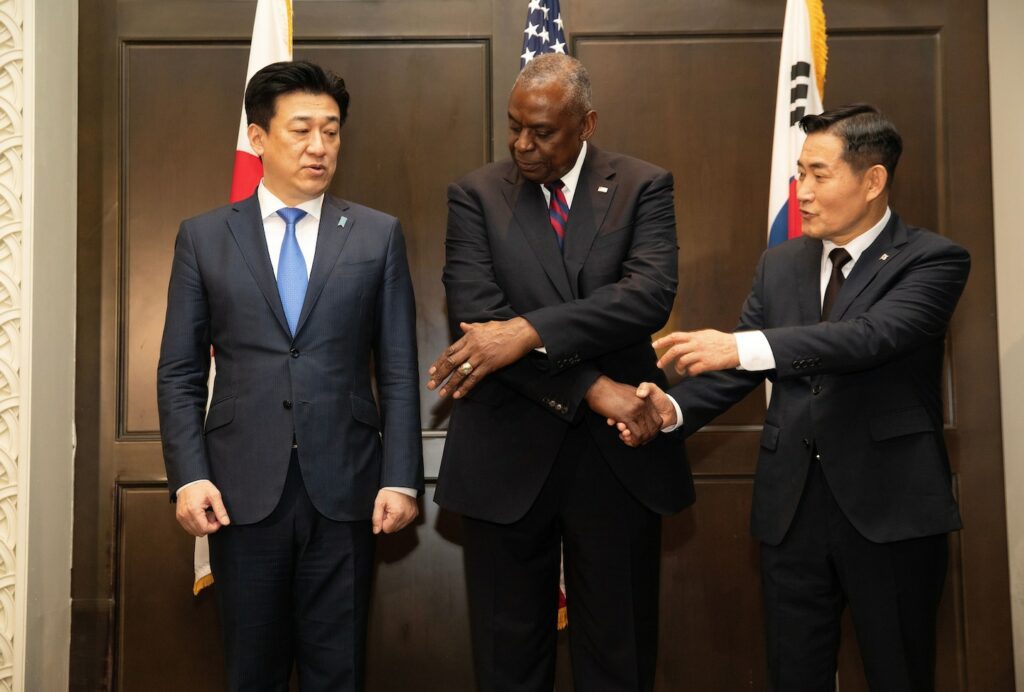Robert D. Blackwill is Henry A. Kissinger senior fellow at the Council on Foreign Relations. Richard Fontaine is CEO of the Center for a New American Security. They are co-authors of “Lost Decade: The U.S. Pivot to Asia and the Rise of Chinese Power.”
In 2011, President Barack Obama announced that the United States would, after centuries of preoccupation with Europe and decades of Middle East wars, put the Asia-Pacific region first. Washington would increase its military presence there, step up diplomacy, secure a regionwide trade deal and more.
Pivoting — or rebalancing — to Asia quickly won support among policymakers in both parties and across subsequent administrations. It coupled sound strategic logic with a keen appreciation of the ways in which the world was changing. By engaging more deeply with the region, the United States could better reap its economic promise and more effectively deal with a rising China.
It was easier said than done. The United States established new basing and porting arrangements in the Asia-Pacific region, invested in new systems and research and development, and forged new defense relationships, all to the good. Yet in 2022, Washington had more troops in Europe than it did in 2011. High-end systems deployed routinely to the Middle East and not to Asia. And during this entire period, Chinese military power grew at an astonishing clip. The result has been a dramatic deterioration in the Asia-Pacific military balance away from the United States and its allies.
Meanwhile, China stepped up its diplomacy, forged new partnerships and increased its global engagement as U.S. attention wandered, depending on events and policymakers’ personal preferences. The Trans-Pacific Partnership, a 12-member trade agreement that was once a central economic initiative, crashed on the rocks of domestic political opposition. As President Donald Trump withdrew from the TPP, China emerged as the top trading partner of nearly every nation across the region.
Throughout the Obama and Trump years, the result was a lost decade in responding to China’s rise. Even if the pivot had been executed as intended, the United States would today still face a momentous challenge from China. But it would be far better prepared to take it on.
What is to be done now? China’s unique combination of power and determination to upend global order represents a generational challenge for American policymakers. Managing our vital interests across multiple regions is complex but possible. But the thinking behind the pivot — harnessing Asia’s dynamism and responding to Chinese power, while protecting vital U.S. interests in other regions — should represent the core of America’s grand strategy for decades.
The Biden administration has taken multiple steps in the right direction. It revived the four-nation group (Japan, Australia, India and the United States) known as the “Quad,” won new access for U.S. forces in the Philippines and Papua New Guinea, and is expanding the American presence in Australia. It stepped up diplomacy with India, the Pacific islands and Southeast Asia while strengthening its alliance with Japan.
Yet the Biden moves are at best only a beginning. The White House has offered no serious economic incentive to Asia, and new trade agreements remain off the table. Regional disparities continue: Of $95 billion allocated in the recent supplemental security funding bill, for instance, less than 9 percent was set aside for Asia-Pacific security. Doubts about U.S. staying power, particularly amid a possible presidential transition, abound across Asia.
Several steps would move Washington in the right direction.
First, it should increase the defense budget to ensure that more resources are available for every region. The United States spends less than 3 percent of its gross domestic product on defense, approaching the lowest level since the late 1990s. Maintaining support for Ukraine is critical, but stronger European allies should allow the redeployment of U.S. air and naval assets to Asia. The United States can do the same in the Middle East, surging only for significant operations such as the Israel-Gaza conflict. In both these regions, steadfast American diplomacy, much more than the number of troops and weapons on the ground, will secure U.S. influence.
Second, Washington should revive its moribund economic agenda in Asia by joining the Comprehensive and Progressive Agreement for Trans-Pacific Partnership, which would increase U.S. access to regional markets and vice versa. Washington should begin by pursuing bilateral digital trade deals with Japan, South Korea and Singapore — or, better yet, aim for a regional digital accord. The United States should also allocate a greater share of foreign aid and development assistance to the Asia-Pacific region, which currently receives only a meager percentage.
Finally, Washington should more robustly contest Beijing’s autocratic worldview. Congress should fund programs that support democracy and help like-minded countries protect themselves against external meddling. The United States should stand for freedom, sovereignty, independence, and a stable world order based on liberal values and the rule of law.
The president and Congress should do the hard things in the military, economic and diplomatic spheres before China’s actions force their hand. There are vast challenges in Europe and the Middle East today, and it often seems that Washington is stretched thin. But the United States, together with its partners, has the resources to pivot to Asia. For the sake of America’s security, prosperity and freedom, now is the moment to do so.
Source link : https://www.washingtonpost.com/opinions/2024/06/10/trump-obama-biden-asia-pivot/
Author :
Publish date : 2024-06-10 08:18:03
Copyright for syndicated content belongs to the linked Source.
